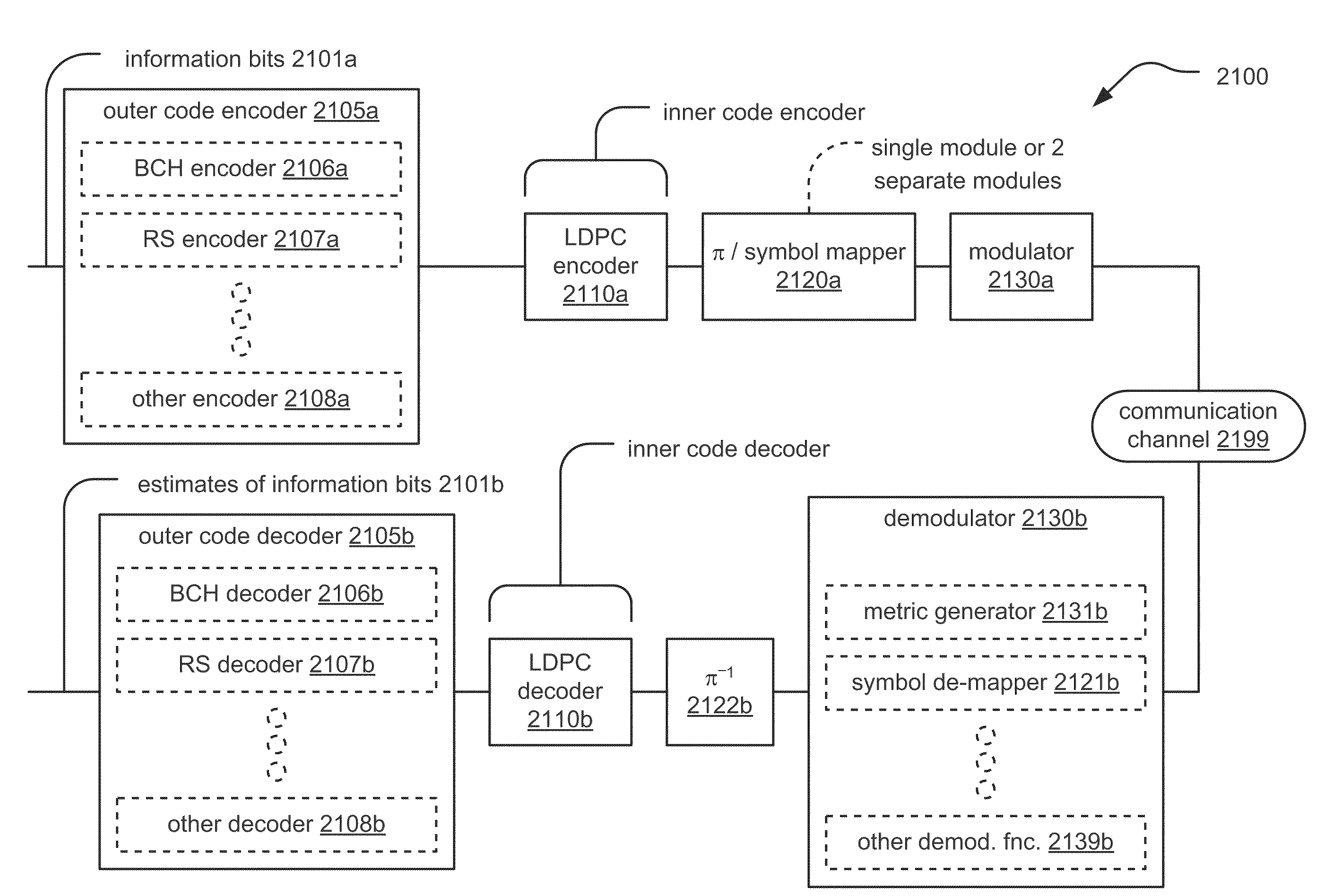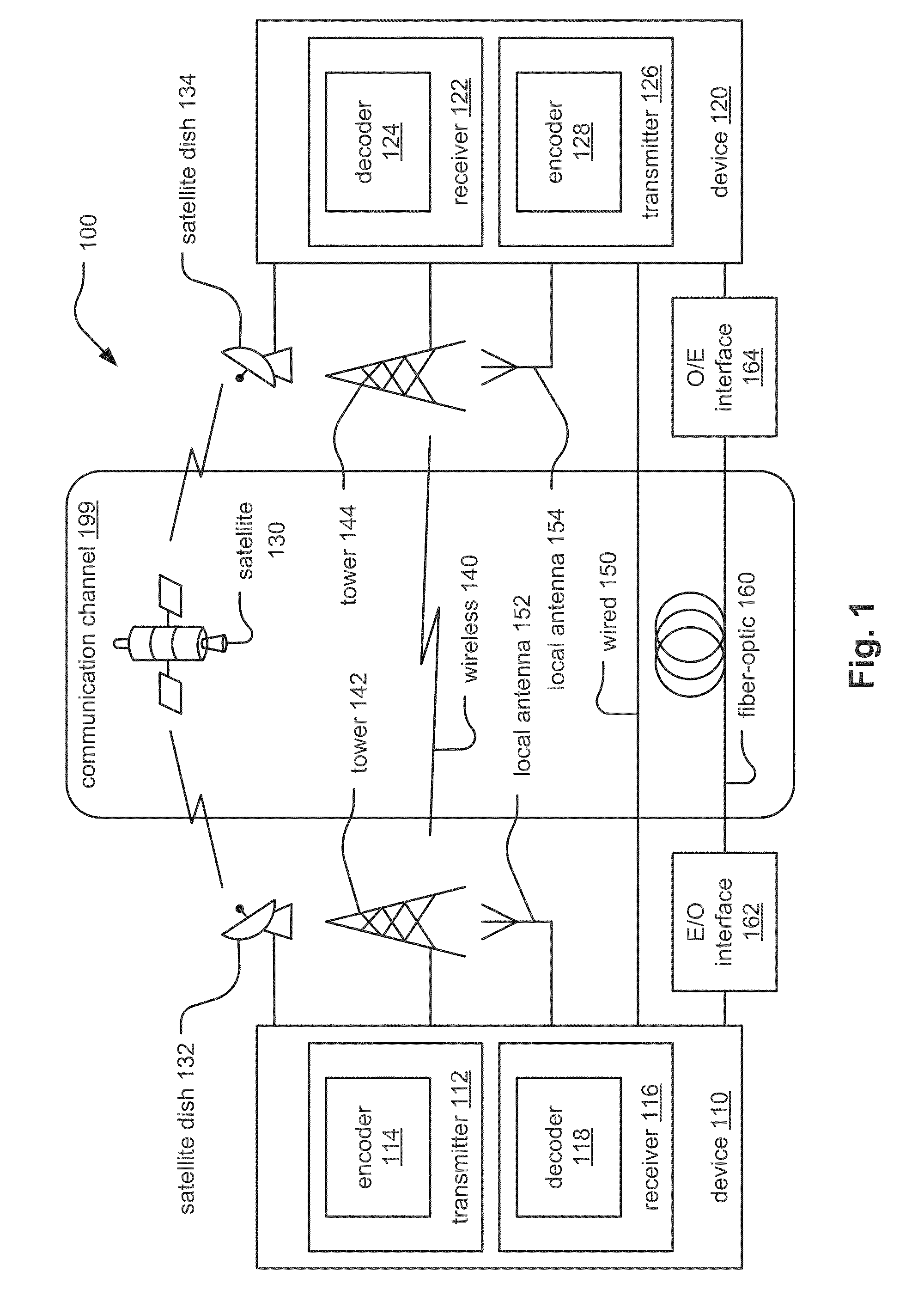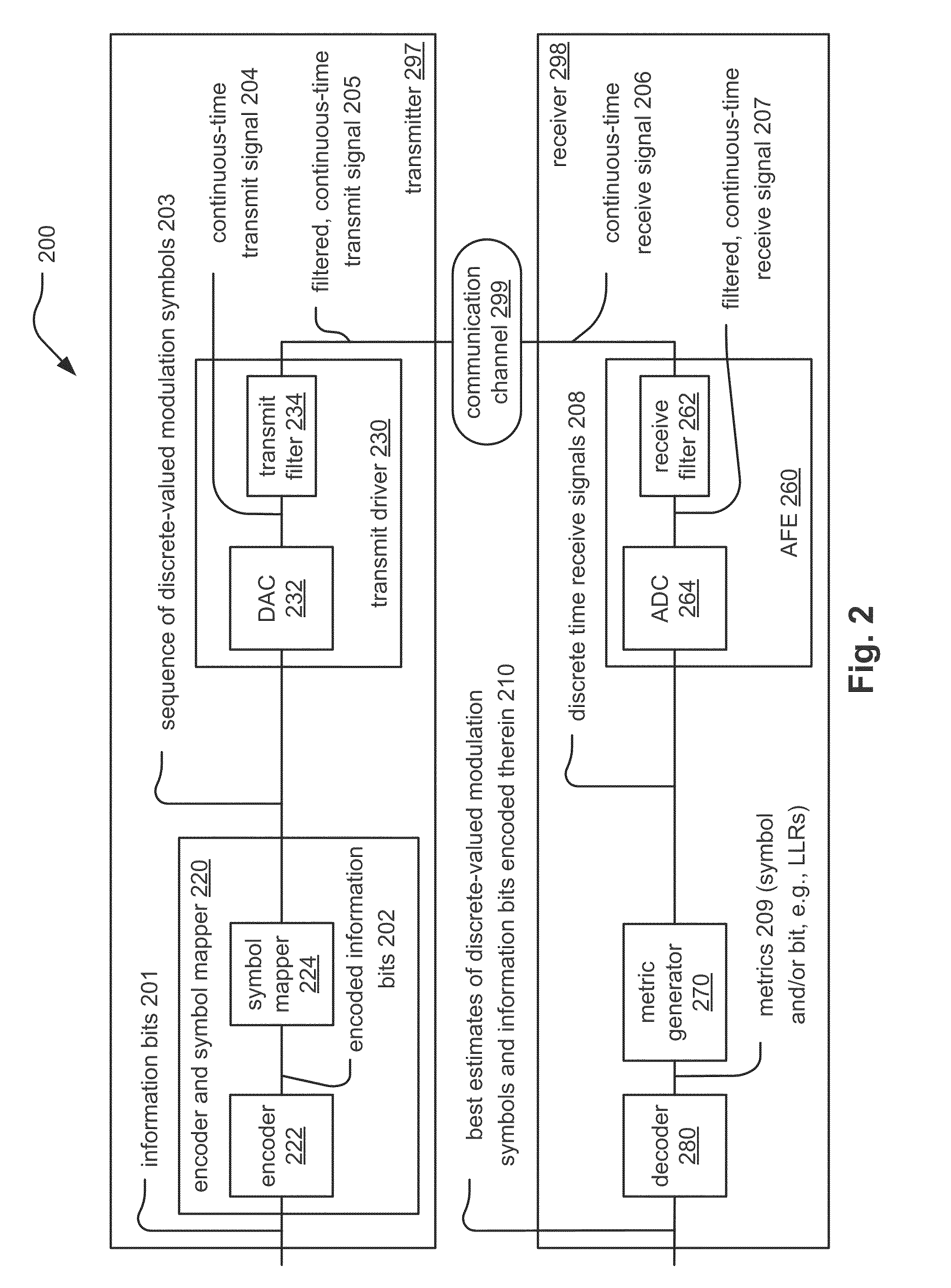LDPC coding systems for 60 GHz millimeter wave based physical layer extension
a technology of physical layer extension and coding system, which is applied in the direction of coding, code conversion, fault response, etc., can solve the problem of excluding their use in such applications in very high data rate communication system application areas
- Summary
- Abstract
- Description
- Claims
- Application Information
AI Technical Summary
Problems solved by technology
Method used
Image
Examples
embodiment 500
[0072]FIG. 5 illustrates an embodiment 500 of the relationship between an overall LDPC matrix and the individual sub-matrices therein that include all zero-valued sub-matrices and / or CSI (Cyclic Shifted Identity) sub-matrices (including the sub-matrix rows and sub-matrix columns of the LDPC matrix).
[0073]A binary LDPC code may be fully described by its parity check matrix (i.e., its LDPC matrix). At the top of FIG. 5, the individual elements of an LDPC matrix, H, are shown:
H=[h0,0h0,1…h0,n-1h1,0h1,1…h1,n-1⋮⋮⋱⋮hm-1,0hm-1,1…hm-1,n-1]
[0074]where n is the number of bits in a codeword, m is the number of parity check equations of the LDPC code, and hi,j is either 0 or 1. An u-bit vector c (e.g., c=(c1, c2, . . . , cN)) is a codeword (i.e., of the LDPC code) if and only if
HcT=0.
[0075]For such an LDPC code, the parity matrix H is also composed of a number of q-by-q (i.e., q×q) square sub-matrices as shown in the bottom portion of FIG. 5 and also below:
H=[S0,0S0,1…S0,N-1S1,0S1,1…S1,N-1⋮⋮⋱⋮S...
embodiment 600
[0099]FIG. 6 illustrates an embodiment 600 of a portion of an LDPC (Low Density Parity Check) bipartite graph (or Tanner graph) of Type 1 construction.
[0100]Another type of LDPC code is presented below.
[0101]Type 2 (used in DVB-S2 standard, see reference [5]).
[0102]In this embodiment, the matrix, B0, is the same as in Type 1. The difference of the LDPC code structure is the sub-matrix P0,(m−1). Instead of a full rank I(q−1), the first row of I(q−1) is zeroed to obtain a rank q−1 matrix as follows:
D=[000…00100…00010…00⋮⋮⋮⋱⋮⋮000…00000…10]
[0103]After permuting the rows and columns, the following LDPC parity check matrix, H, can be obtained having the form of, H [H1H0], where the (qm)×(qm) matrix is as follows:
H0=[100…00110…00011…00⋮⋮⋮⋱⋮⋮000…10000…11]
[0104]This structure offers a larger open loop in the Tanner graph of the parity check matrix (e.g., see FIG. 7).
embodiment 700
[0105]FIG. 7 illustrates an embodiment 700 of a portion of an LDPC bipartite graph (or Tanner graph) of Type 2 construction.
[0106]Yet another type of LDPC code is presented below.
[0107]Type 3 (used in WiMAX (IEEE 802.16e) as in reference [6] and Wi-Fi (IEEE 802.11n) as in reference [7]).
B0=[110…0…00011…0…00⋱⋱11100⋱⋱0000…1000000…1110000…01]
[0108]That is, b0,0=bs,0=bm−1,0=1, bi,j=1, i=0, . . . , m−1 and bi,j+11, i=0, . . . , m−2. All other entries are zero. Moreover, the corresponding size q sub-matrices for the non-zero positions in the matrix B0 (e.g., from B=[B1B0]) are as follows:
Pi,i=I,i=0, . . . , m−1;Pi,j+1=I,i=0, . . . , m−2, and
Ps,0=1, P0,0=Pm−1,0=I(a)
[0109]which are obtained by right cyclically shifting ‘a’ columns from the identity matrix. One reason that this type of base matrix and corresponding sub-matrices are chosen is that it can use a simplified encoding method as described in reference [4].
[0110]A novel type of LDPC code is presented below.
[0111]Partial Tree-like Gr...
PUM
 Login to View More
Login to View More Abstract
Description
Claims
Application Information
 Login to View More
Login to View More - R&D
- Intellectual Property
- Life Sciences
- Materials
- Tech Scout
- Unparalleled Data Quality
- Higher Quality Content
- 60% Fewer Hallucinations
Browse by: Latest US Patents, China's latest patents, Technical Efficacy Thesaurus, Application Domain, Technology Topic, Popular Technical Reports.
© 2025 PatSnap. All rights reserved.Legal|Privacy policy|Modern Slavery Act Transparency Statement|Sitemap|About US| Contact US: help@patsnap.com



